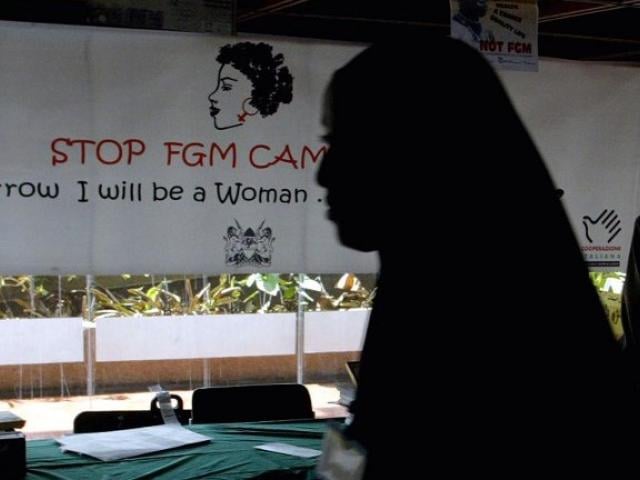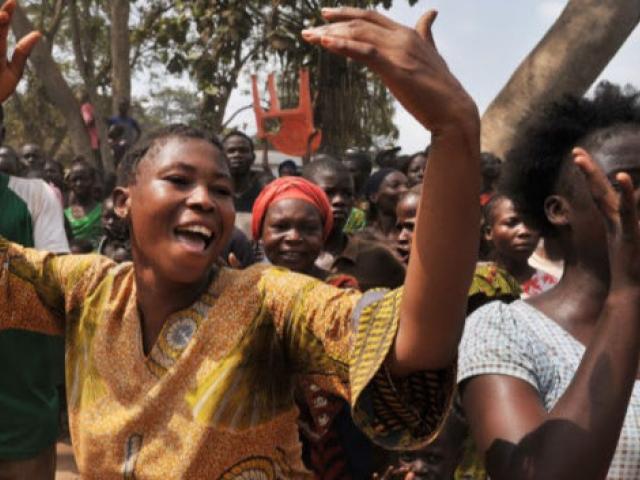-
The newspaper quoted a press release from a prominent Kenyan healthcare NGO and claimed that one in 10 Kenyan girls had been the victims of genital mutilation “during” the Covid pandemic.
-
By the NGO’s own admission, these results were drawn from a study conducted in one county that only surveyed 111 people. Experts told us no meaningful conclusions could be drawn from this.
-
The overall prevalence of female genital mutilation in the Kenyan population quoted in the article is mostly accurate, based on the most recent data.
There has been a renewed focus on female genital mutilation in the Kenyan press in recent months.
An article published in Kenyan daily the Star claimed that “one in 10 girls” had been subjected to female genital mutilation since the start of the Covid-19 pandemic. Africa Check’s artificial intelligence tools identified the claim.
The World Health Organization (WHO) defines female genital mutilation (FGM) as “the partial or total removal of external female genitalia” for non-medical reasons.
The practice is often done for cultural and social reasons but the international health organisation says it “has no health benefits for girls and women”. (Note: FMG is sometimes called “female genital mutilation or cutting”, or FGM/C.)
The news report also claimed that the prevalence of the practice in Kenya was 21%. We checked both claims.
The news report attributed the statistic to “a study by Amref Health Africa”, a non-governmental organisation in Nairobi, Kenya, focused on healthcare development and medical research.
The Star journalist told Africa Check the statistic came from a 19 July 2021 press release from Amref, which read: “The findings from Kenya show one in 10 girls have been subjected to FGM/C and that the practice increased during the pandemic”.
Survey of 111 people in one county
Dr Tammary Esho, director of the Centre of Excellence to End Female Genital Mutilation/Cutting hosted at Amref, told Africa Check the the findings of the Amref study were specific to Kajiado county, south of Nairobi bordering Tanzania.
A total of 111 respondents were interviewed between June and September 2020, including medical professionals, officials from government and community members.
They were asked: “Have girls undergone circumcision in this community during [the] Covid-19 pandemic?”
Of the 111 respondents, 11 answered “yes” – 9.9%. All 11 respondents also answered “yes” to a subsequent question on whether the circumcision of girls had increased during the Covid-19 pandemic.
‘Tiny sample’ and vague survey questions
Esho stood by the newspaper's reporting of the study – that one in 10 girls had been subjected to the practice. But two demographic and statistical experts raised concerns.
Prof Tom Moultrie is a demographer at the University of Cape Town in South Africa and the director of the Centre of Actuarial Research. He reviewed the study and its findings. One of the issues he raised was the way people were selected to answer the survey.
“It may well be that all sampled members were known to each other. There is no indication that the selection was random,” he told Africa Check.
“Accordingly, great circumspection should be exercised in extrapolating these results to anything beyond the sampled population,” he said.
The study’s finding that female genital mutilation “increased during the pandemic” is also not sound, he said.
“I certainly would not place any weight on essentially arbitrary measures as to whether the incidence of FGM has increased during Covid.”
He said the number of people who reported this – 11 – was “ridiculously small”.
‘Potentially misleading’
Prof Charles Wheelan, a senior lecturer at Dartmouth College in the US and author of Naked Statistics, told Africa Check that the conclusion was “potentially misleading”.
He said a better question to ask would have been: “Have you, or perhaps someone in your immediate family, been subjected to FGM during Covid?”
“Otherwise it's possible that they are all responding to the same media accounts or something else.”
Based on the experts who vetted the data and our conversations with the researchers, we rate the claim unproven.
The newspaper article also claimed that the prevalence of female genital mutilation in Kenya was “currently at 21%”.
Prevalence measures the proportion of a population who have a specific characteristic, such as being infected with a disease, over a given time period.
The prevalence of female genital mutilation and cutting is measured through surveys in which women and girls aged between 15 and 49 years self-report.
Dr Caroline Kabiru heads the population dynamics and reproductive health unit at the Africa Population and Health Research Centre, a population and health research thinktank in Kenya.
She told Africa Check that the best place to check prevalence data is Kenya’s demographic and health surveys.
The surveys capture data on population and health status in Kenya. This includes fertility, domestic violence, reproductive health, family planning, noncommunicable diseases, nutrition and the prevalence of female genital mutilation.
The most recent report is from 2014. It showed that an estimated “21% of women reported being circumcised”. This figure was 27% in 2008/09 and 32% in 2003.
“The majority of circumcised women (87%) had a cut with flesh removed, 9% reported that their genital area had been sewn closed, 2% were cut with no flesh removed, and 2% did not know or did not have a response recorded,” the report noted.
Experts say practice must be eradicated
Kabiru said concerted efforts were needed to eradicate the practice.
These efforts include “increasing access to schooling for girls, tackling poverty, and addressing harmful social norms including perceptions that female genital mutilation is a religious requirement or makes girls better wives”.
As the trends indicate, collectively, the different interventions and programmes have had an effect.
“There are many programmes on female genital mutilation being implemented in Kenya. There are a lot of alternative rites of passage, such as community dialogues, intended to change perspectives on the practice.”
While the most recent data is over six years old, we rate this claim mostly correct.









Add new comment